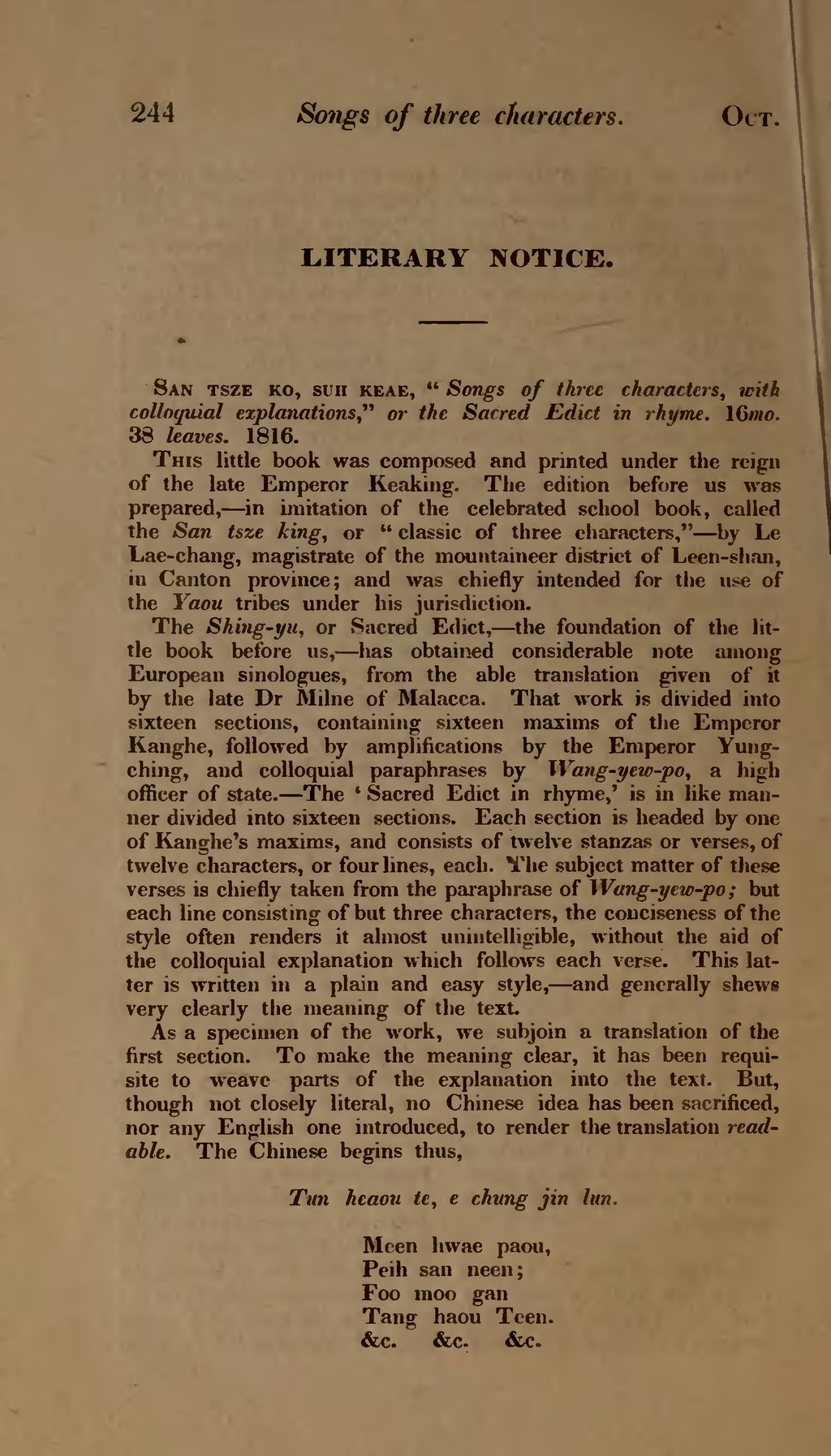LITERARY NOTICE.
This little book was composed and printed under the reign of the late Emperor Keaking. The edition before us was prepared,—in imitation of the celebrated school book, called the San tsze king, or "classic of three characters,"—by Le Lae-chang, magistrate of the mountaineer district of Leen-shan, in Canton province; and was chiefly intended for the use of the Yaou tribes under his jurisdiction.
The Shing-yu, or Sacred Edict,—the foundation of the little book before us,—has obtained considerable note among European sinologues, from the able translation given of it by the late Dr Milne of Malacca. That work is divided into sixteen sections, containing sixteen maxims of the Emperor Kanghe, followed by amplifications by the Emperor Yungching, and colloquial paraphrases by Wang-yew-po, a high officer of state.—The 'Sacred Edict in rhyme,' is in like manner divided into sixteen sections. Each section is headed by one of Kanghe's maxims, and consists of twelve stanzas or verses, of twelve characters, or four lines, each. The subject matter of these verses is chiefly taken from the paraphrase of Wang-yew-po; but each line consisting of but three characters, the conciseness of the style often renders it almost unintelligible, without the aid of the colloquial explanation which follows each verse. This latter is written in a plain and easy style,—and generally shews very clearly the meaning of the text.
As a specimen of the work, we subjoin a translation of the first section. To make the meaning clear, it has been requisite to weave parts of the explanation into the text. But, though not closely literal, no Chinese idea has been sacrificed, nor any English one introduced, to render the translation readable. The Chinese begins thus,
Tun heaou te, e chung jin lun.
Meen hwae paou,
Peih san neen;
Foo moo gan
Tang haou Teen.
&c. &c. &c.
